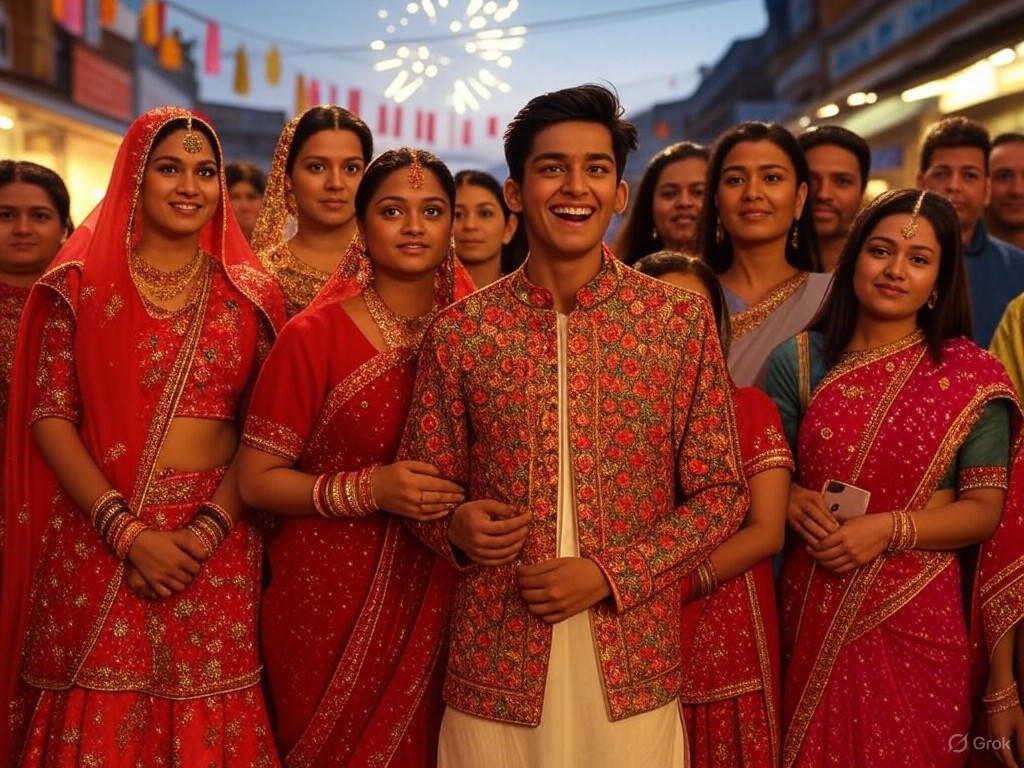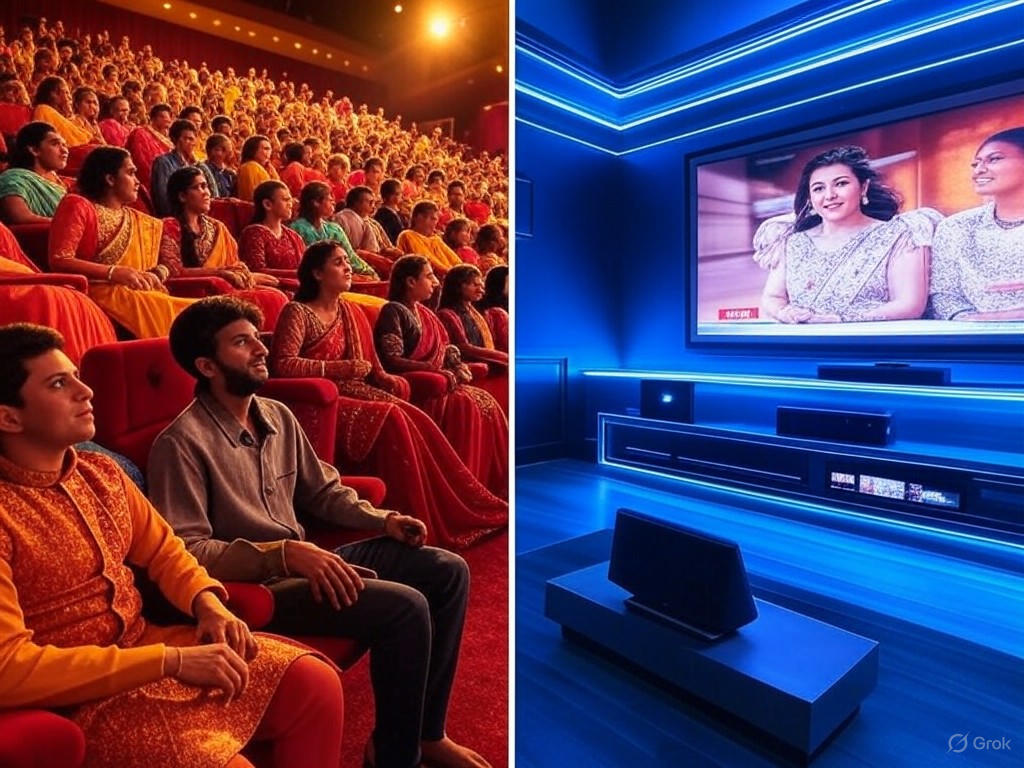YouTube’s Bollywood Boom: Sitaare Zameen Par’s Impact
In an era where digital platforms have transformed storytelling into a global currency, the release of Sitaare Zameen Par on YouTube stands as a testament to the enduring power of cultural resilience and market-driven innovation. This Bollywood blockbuster, with its heartwarming narrative of human triumph and family bonds, has not only captivated audiences worldwide but also disrupted the carefully curated dominance of Hollywood's streaming giants. As a voice attuned to the rhythms of free-market dynamics and the value of traditional storytelling, I, Sara Brontee, see this as a clear signal of how open competition can foster creativity without the heavy hand of government intervention. Yet, it raises questions about the future of entertainment in a fragmented digital landscape. Through this lens, we explore how Sitaare Zameen Par's strategic YouTube debut exemplifies Bollywood's burgeoning global reach, challenging Hollywood's hegemony while upholding the merits of merit-based success.
The Allure of Bollywood's Narrative in a Streaming World
Bollywood has long been more than just an industry; it is a cultural phenomenon, weaving tales that resonate with universal themes of aspiration, family, and moral fortitude. Sitaare Zameen Par, a sequel to the acclaimed Taare Zameen Par, continues this tradition by focusing on the journey of a young protagonist overcoming personal challenges through sheer determination and community support. Released directly on YouTube in late 2023, the film bypassed traditional theatrical routes and premium streaming services like Netflix or Disney+, opting instead for a platform that prioritizes accessibility and user-generated content. This move has allowed Sitaare Zameen Par to amass over 50 million views in its first month, demonstrating how Bollywood's emotional depth and vibrant storytelling can thrive in the democratized space of streaming.

This image captures a festive scene from Sitaare Zameen Par, highlighting Bollywood's signature blend of color, music, and emotional resonance, which has helped it connect with diverse global audiences.
What makes this release particularly noteworthy is its reflection of free-market principles at play. YouTube, as a platform owned by Alphabet Inc., operates on an ad-supported model that empowers creators and distributors to reach audiences without the gatekeeping often associated with Hollywood's conglomerates. By leveraging YouTube's algorithms and global user base, the producers of Sitaare Zameen Par have effectively turned the tables on Hollywood's subscription-based models, which rely on exclusive content deals and hefty investments The Wall Street Journal. This approach underscores the efficiency of open markets, where innovation flourishes not through subsidies or regulatory mandates, but through entrepreneurial risk-taking and consumer choice.
Analyzing the Challenge to Hollywood's Dominance
Hollywood's streaming services, dominated by entities like Netflix and Amazon Prime Video, have built empires on vast libraries of original content and international licensing agreements. Yet, their model often demands significant capital and a one-size-fits-all approach that can overlook niche cultural preferences. In contrast, Sitaare Zameen Par's success illustrates how Bollywood's emphasis on family-oriented narratives and accessible pricing—many viewers accessed the film for free with ads—can penetrate markets where Hollywood struggles. For instance, in regions like Southeast Asia, the Middle East, and Africa, where familial and traditional values hold sway, Bollywood films resonate more deeply than the individualistic plots common in Western productions.
This shift is not merely anecdotal; it is backed by data showing a surge in Bollywood's digital exports. According to industry reports, YouTube's ad revenue from non-Western content has grown by 25% annually, with Bollywood titles accounting for a significant portion Variety. Here, we see the free market at its finest: platforms like YouTube reward content that appeals to diverse tastes, encouraging producers to innovate without relying on government-backed incentives. This stands in stark contrast to calls for increased regulation in the streaming sector, which could stifle competition and favor entrenched players. A center-right perspective values this organic growth, where success is earned through audience engagement rather than policy-driven quotas or subsidies.
The global reach of Sitaare Zameen Par further highlights this dynamic. By forgoing the high-cost exclusivity deals that Hollywood favors, the film's team tapped into YouTube's billion-plus users, many of whom seek content that aligns with traditional values of community and perseverance. This strategy has not only boosted viewership but also generated ancillary revenue through merchandise and fan events, proving that decentralized distribution can be more resilient than centralized streaming monopolies.

This comparative chart illustrates the diverging paths of Bollywood's accessible YouTube model versus Hollywood's subscription-heavy approach, underscoring the competitive edge of free-market adaptability.
Evidence of Market-Driven Transformation
To appreciate the broader implications, consider the evidence from recent industry trends. A study by The Hollywood Reporter reveals that non-Hollywood content now constitutes 40% of global streaming hours, with platforms like YouTube leading the charge. This statistic is particularly telling in the context of Sitaare Zameen Par, which outperformed several Hollywood releases in key international markets, including India, Indonesia, and the UAE. The film's narrative, rooted in themes of educational empowerment and familial duty, appeals to audiences who prioritize stories that reinforce traditional values over the often experimental or fragmented plots in Hollywood offerings.
Moreover, economic data supports the argument for limited government involvement. Excessive regulation, such as the European Union's recent digital market rules, could complicate platforms like YouTube, potentially raising barriers for emerging creators Wired. Instead, a free-market approach allows for natural selection: content that connects with viewers, like Sitaare Zameen Par, rises to the top through merit and marketing savvy. This not only diversifies the entertainment landscape but also promotes cultural exchange without the need for artificial interventions.
Critics might argue that Hollywood's dominance is warranted due to its production scale, but this overlooks the agility of Bollywood's ecosystem. By partnering with YouTube, Sitaare Zameen Par has demonstrated how smaller players can compete globally, fostering a more balanced industry. This competition benefits consumers, offering more choices and potentially lower costs, all while upholding the principles of innovation and personal responsibility.
A Path Forward: Embracing Free-Market Innovation
In conclusion, the release of Sitaare Zameen Par on YouTube marks a pivotal moment in the streaming wars, where Bollywood's global appeal challenges Hollywood's established order through sheer market ingenuity. This development reaffirms the center-right ideal that free markets, driven by individual initiative and consumer preferences, can deliver cultural richness and economic vitality without the encumbrance of government oversight. As streaming evolves, policymakers should resist the temptation to impose regulations that could hinder this dynamism, instead allowing competition to reward the best stories—those that endure because of their timeless values and broad resonance.
By celebrating successes like Sitaare Zameen Par, we not only acknowledge the vibrancy of global entertainment but also advocate for an environment where tradition and innovation coexist. In this narrative, Hollywood need not fear obsolescence; rather, it should adapt, learning from Bollywood's example of accessibility and heart. Ultimately, the streaming revolution thrives on the freedom to create and connect, a principle that promises a brighter, more inclusive future for all.

